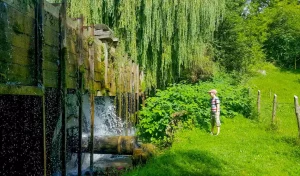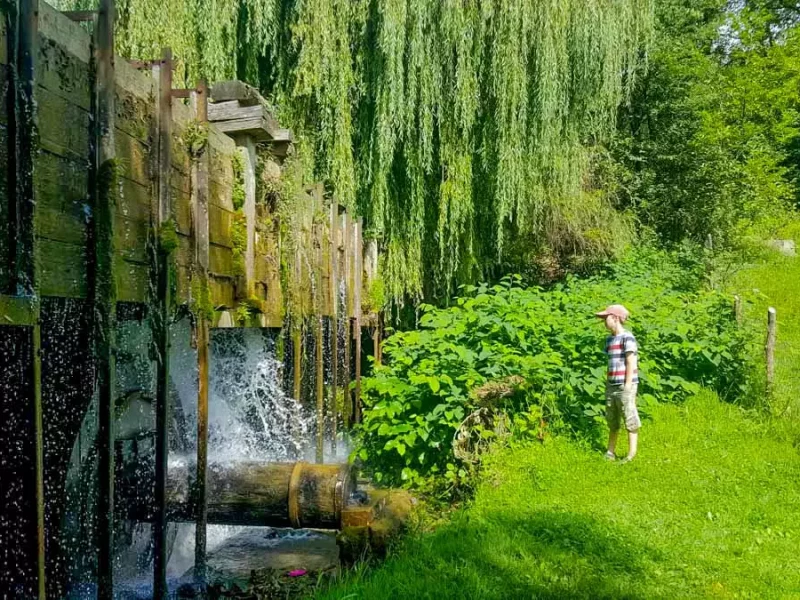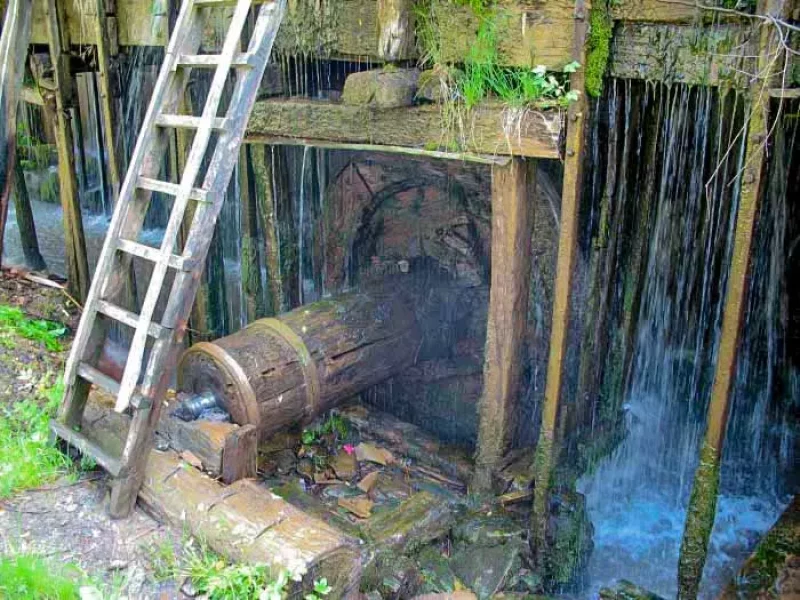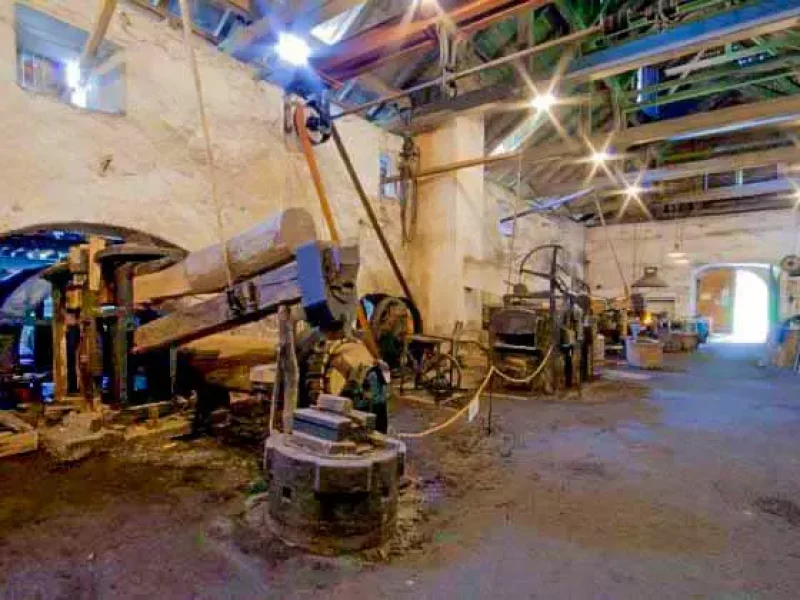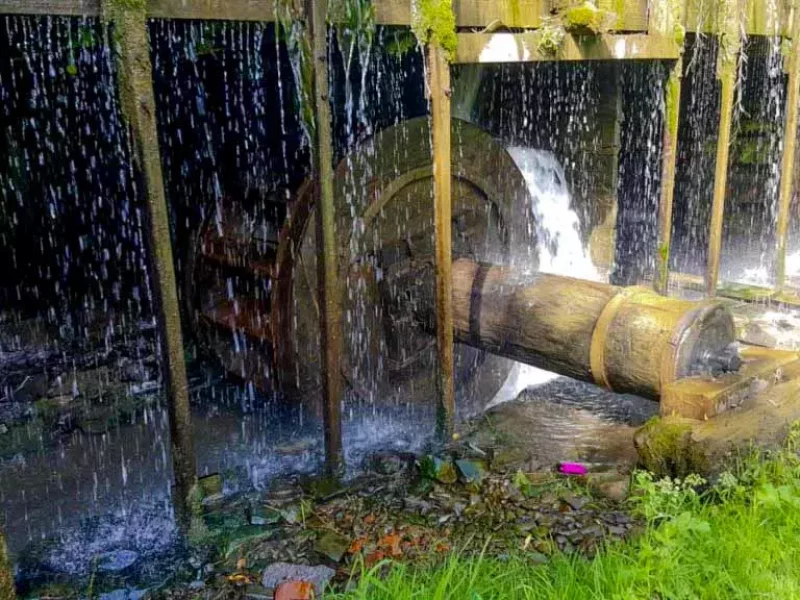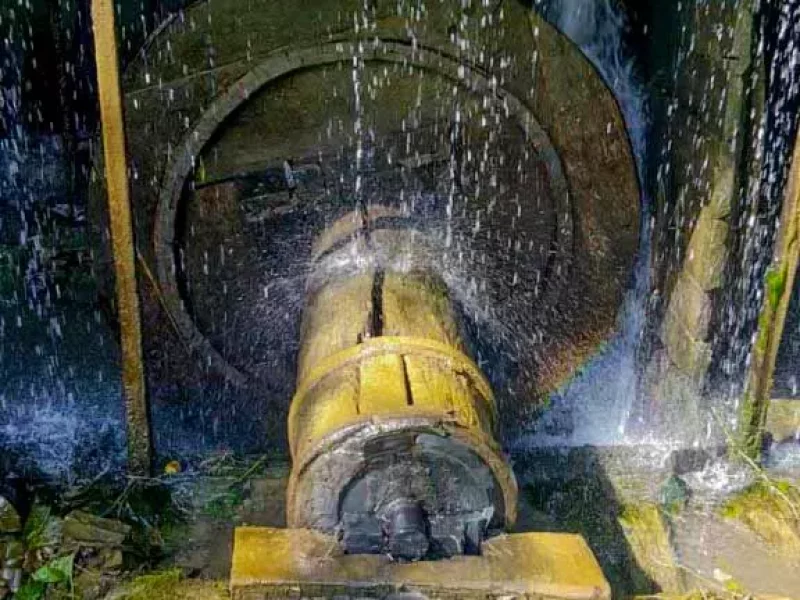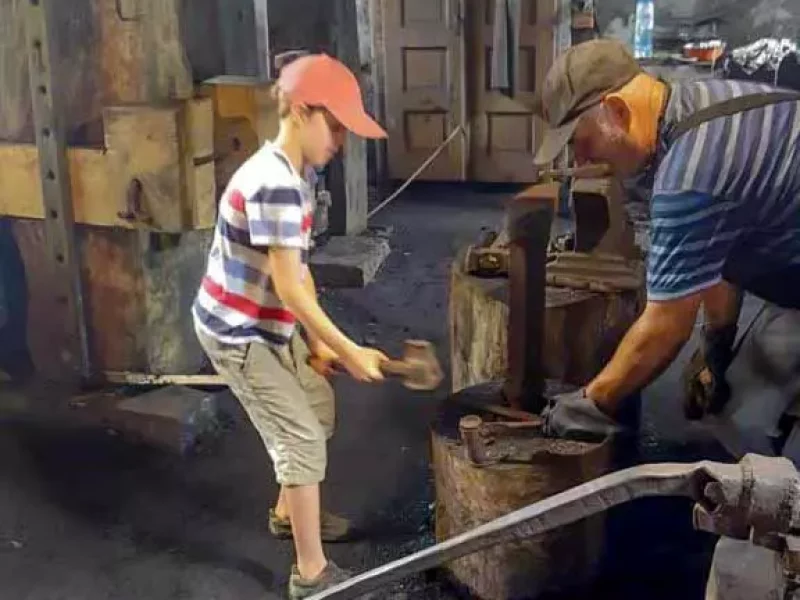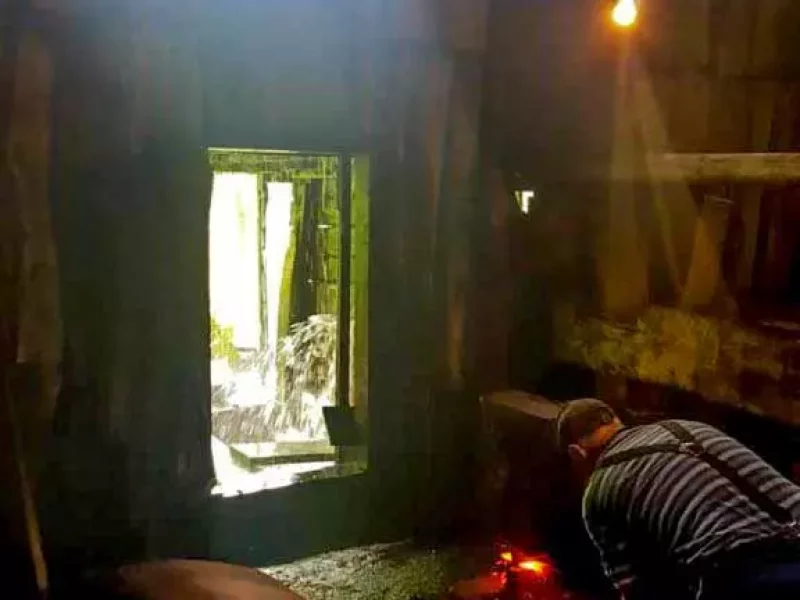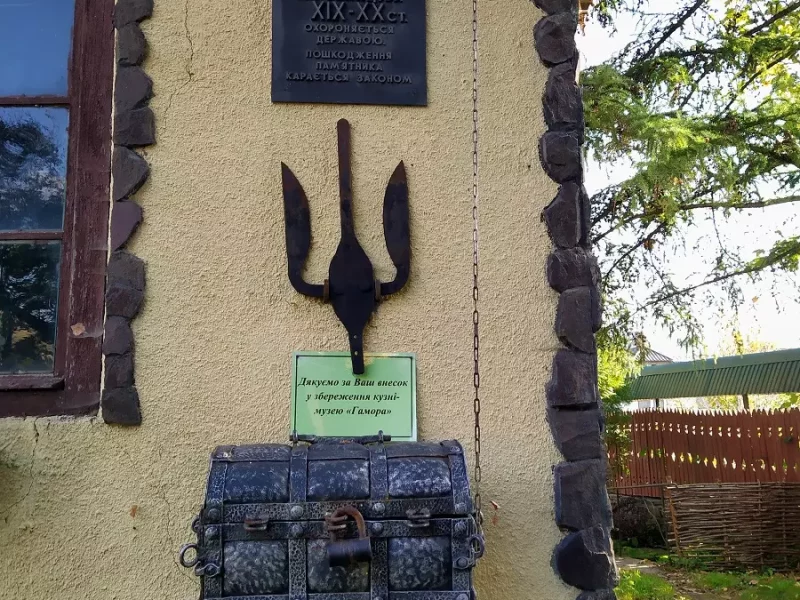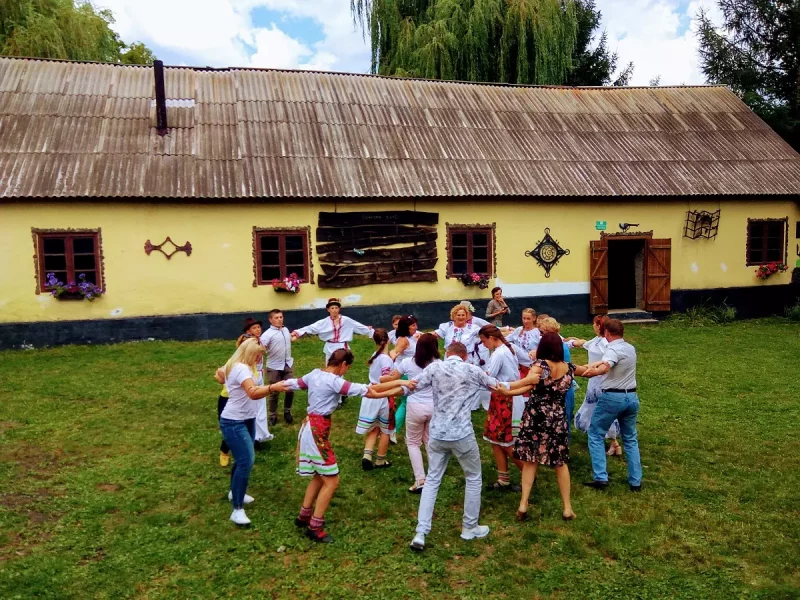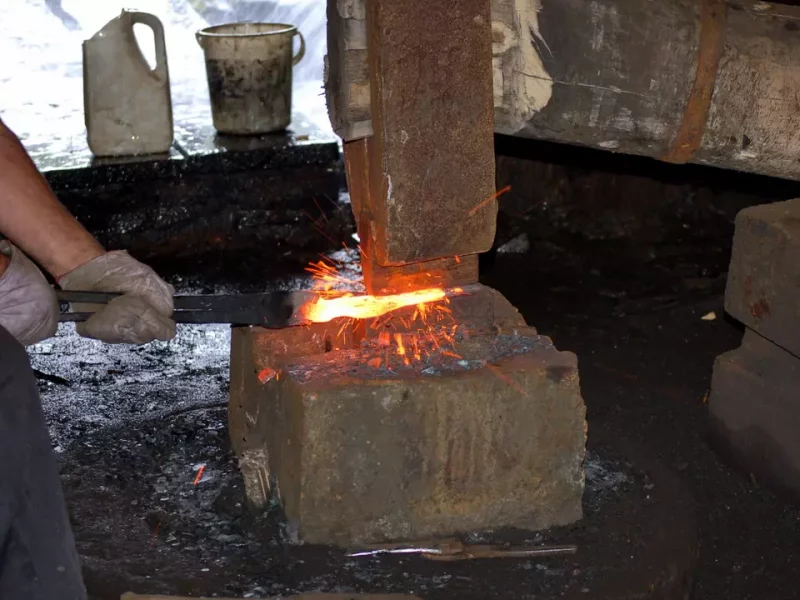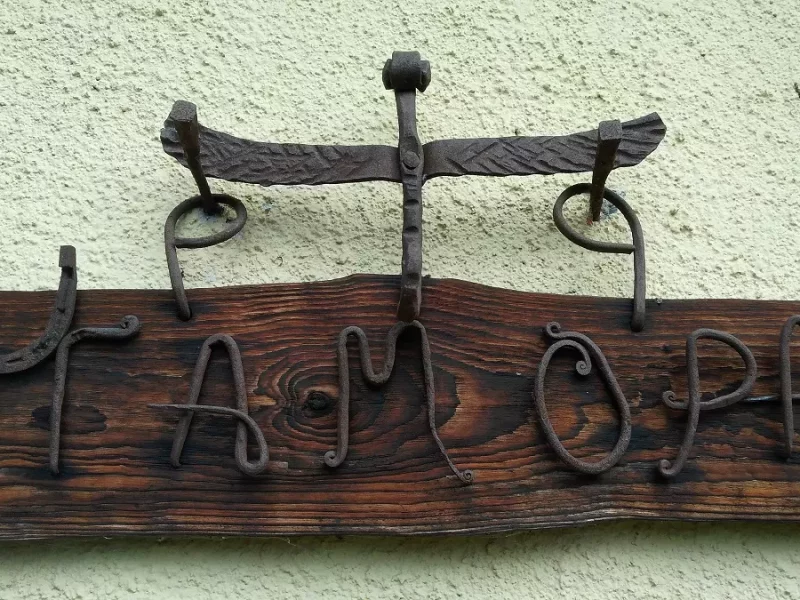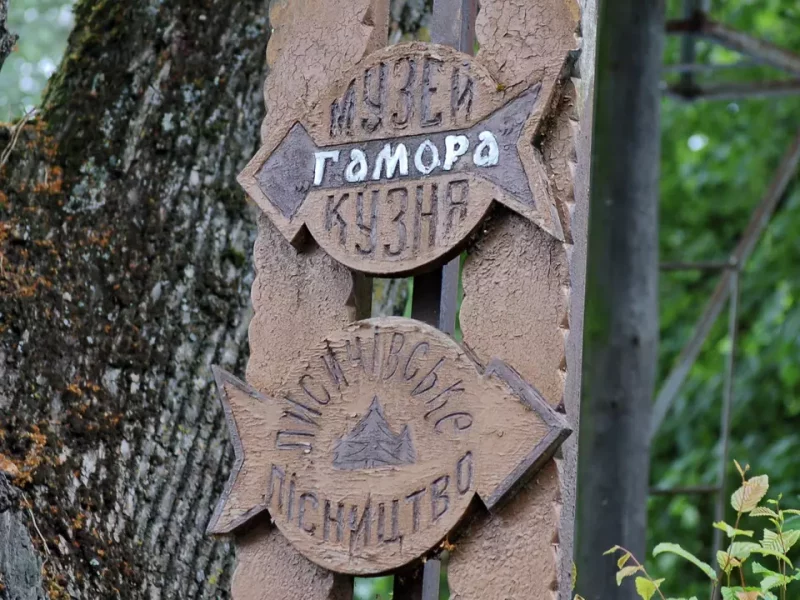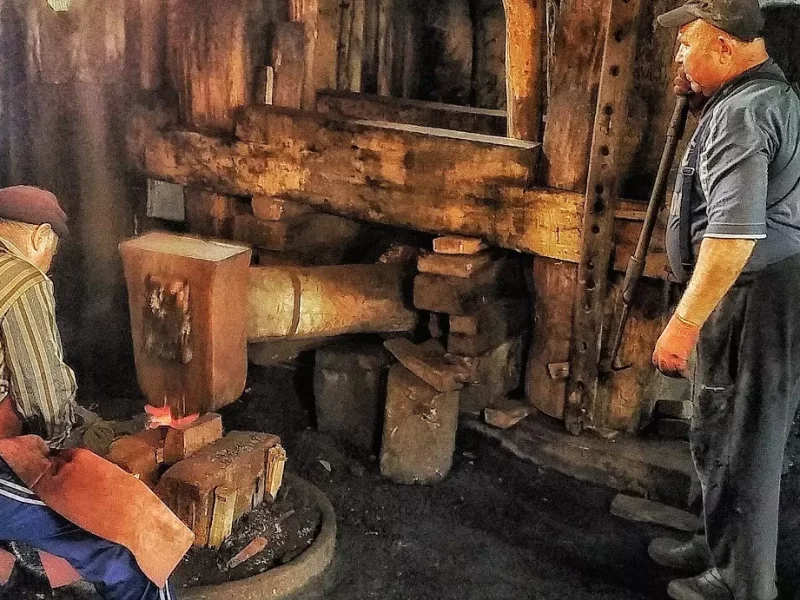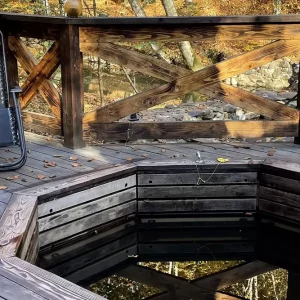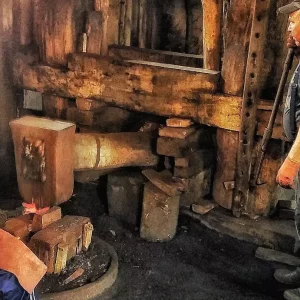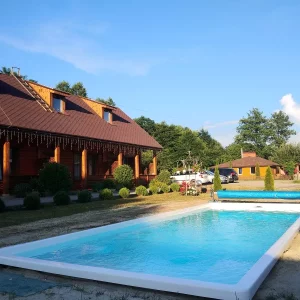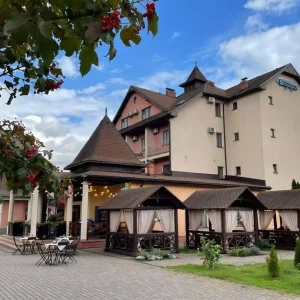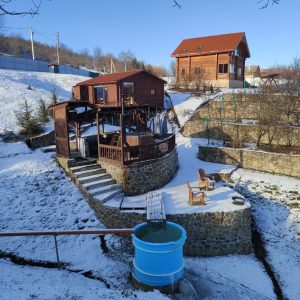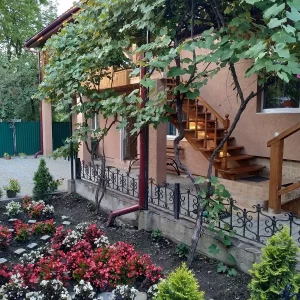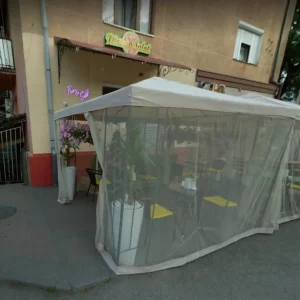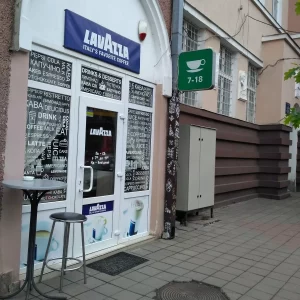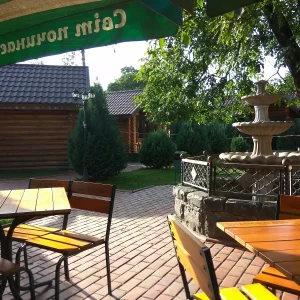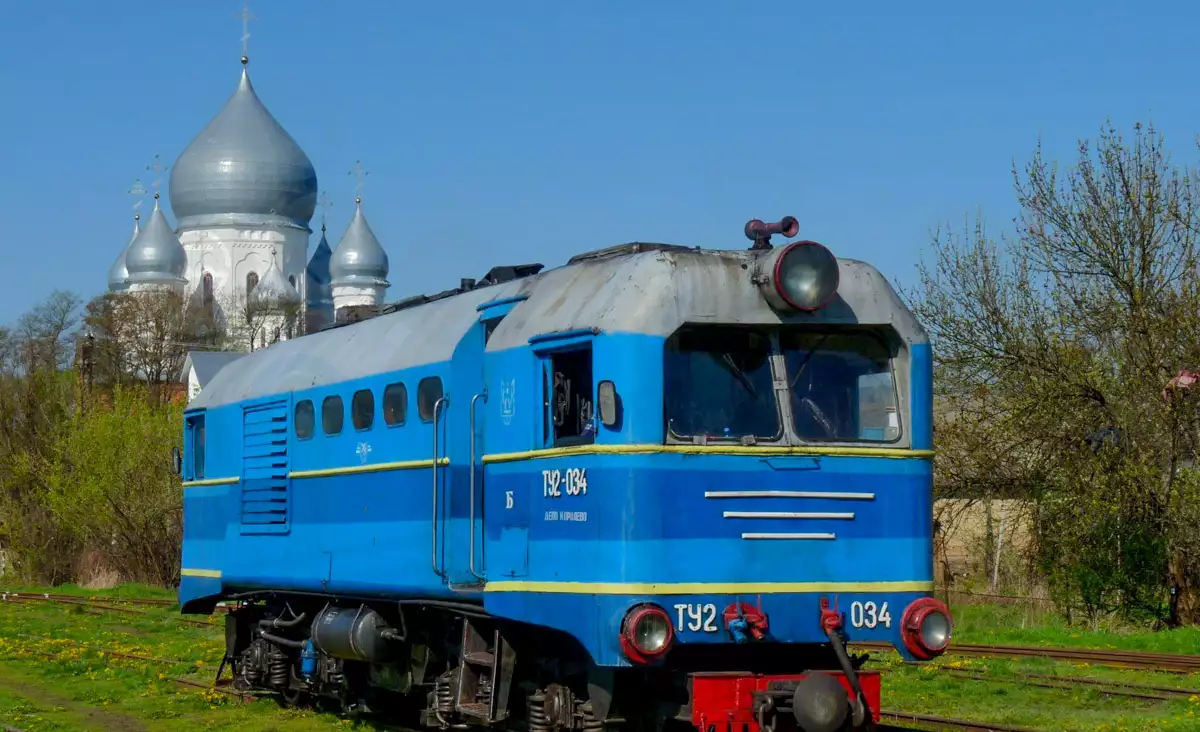The history of the Hamor water forge
The smithy-museum is also unique in that it combines three industrial eras: the craftsman’s (because there is a master and apprentices), the manufacturing (because there is a division of labour) and the factory (because people’s work is partially replaced by mechanisms). The smithy once had to dam the river and dig a 150-metre-long canal. A typical forge of the Austro-Hungarian Empire opens its doors to tourists. There are similar ones in Germany and Slovakia, but they have been out of business for a long time. Hamora has been operating every day for more than 150 years, and in the 1930s it was even one of the four metalworking enterprises in Subcarpathian Rus.
In the forge, you can see a furnace and four hammers weighing up to 125 kilograms. It took 16 blacksmiths to work with them, and now they are made to move by jets of water that fall on a wooden wheel. Out of five such wheels, only two remain. Once upon a time, Gamora’s products (shovels, hoes, axes, horseshoes) were exported to Hungary, Romania, and Yugoslavia. Until the 1990s, Gamora was operating at full capacity, but the floods of 1998 and 2001 destroyed the dam in Lysychiv, and Gamora suspended its operations. At the end of 2001, the Petrovtsy family leased the building, built a new dam, and renovated the forge.
Every July, the forge hosts the All-Ukrainian Festival of Blacksmithing Art “Gamora”.
